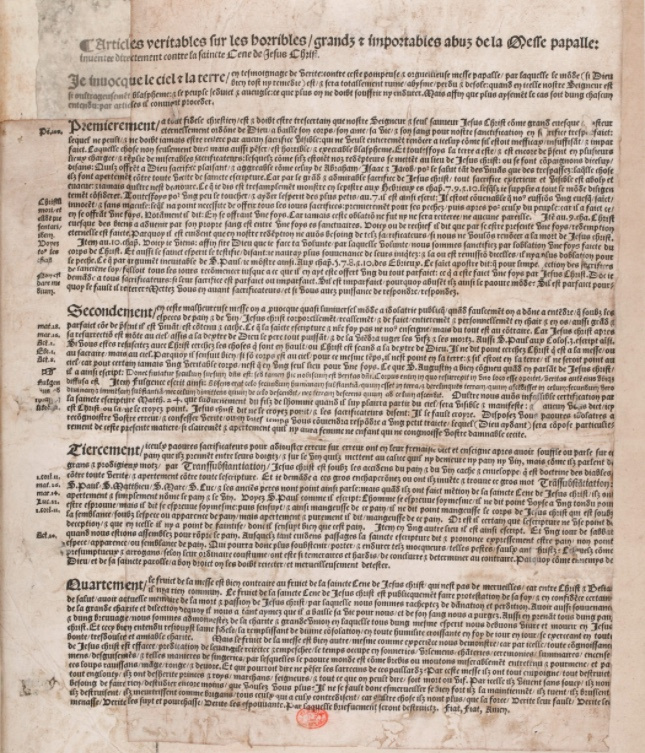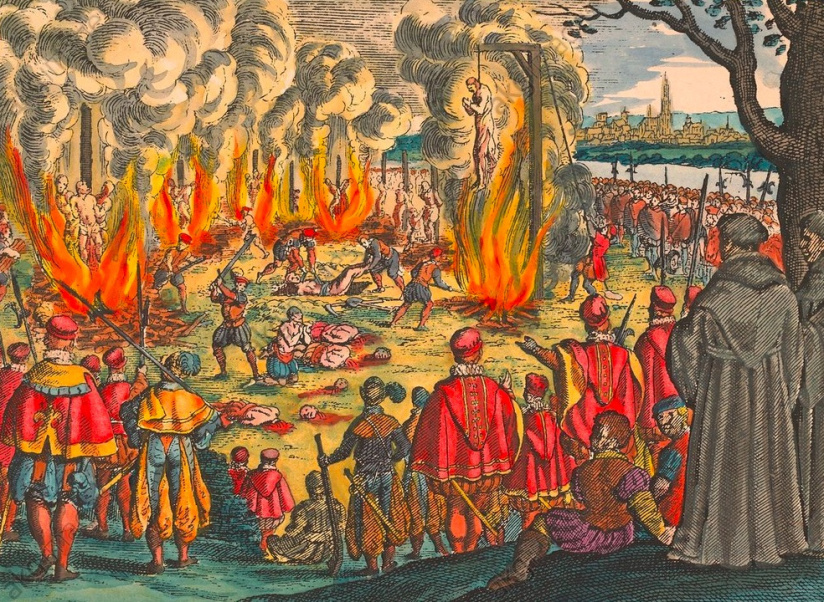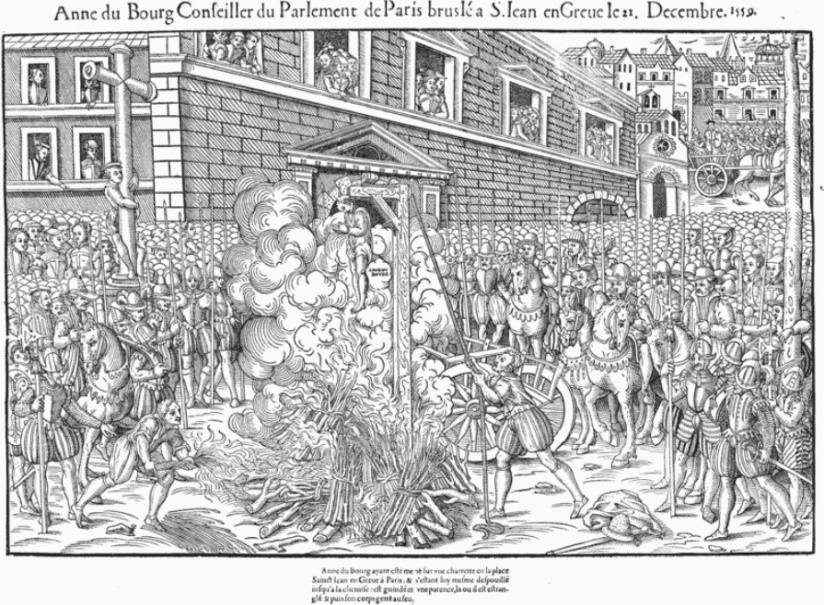On the night of October 17-18, 1534, Huguenot placards violently criticizing the Catholic mass were posted in several French towns, including Paris. TheAffaire des Placards marked the beginning of the persecution of Protestants under the reign of Francis I, and foreshadowed the many Wars of Religion to come.
From the start of his reign on January 25, 1515, King Francis I paid little heed to the Catholic-Protestant turmoil in France, appearing neutral towards the Reformation , which marked the split between the Roman Catholic Church and the Protestant Churches, showing a certain open-mindedness and not hesitating to forge alliances with Protestants in Germany and Switzerland.
The Protestant Reformation, which began in the 16th century, initially attacked only the morals of the clergy; and at the court of Marguerite de Navarre, the king's sister, these new ideas resonated without the king's concern, who went so far as to protect France's first Protestants from the clergy. But between 1527 and 1534, Huguenot opinions took another turn.
On the night of Thursday, October 18, 1534, French Protestants clandestinely covered public places in Paris and several provincial towns, such as Rouen and Tours, with anti-Catholic posters - known as placards - for all to see. A placard was even posted on the door of the king's bedroom in the Château de Blois, while the court residences in Orléans and Amboise were also copiously carpeted with placards.
Violently criticizing the Catholic mass, the authors of these insulting pamphlets vehemently denied the doctrine of transubstantiation during the Eucharist- the transformation of bread and wine into the blood and body of Jesus during mass, one of the pillars of the Catholic religion. The placards read: "True articles on the horrible, great and unbearable abuses of the papal mass invented directly against the Holy Supper of our only Lord Mediator and Savior Jesus Christ."
Taxing the rites of the Mass as witchcraft and accusing the Pope, bishops, priests and monks of lies and blasphemy, the placards were the work ofAntoine Marcourt, a Calvinist-inspired French pastor exiled to Neuchâtel in Switzerland, where he had them printed. The Affaire des Placards marked the first outbreak of hostilities between Catholics and Protestants in France.
For Francis I, this anti-papist affront to theecclesiastical establishment and the monarchy of divine right marked the end of his policy of conciliation towards Protestants and supporters of the Reformation. The king's reaction to this crime of lèse-majesté threatening his authority was swift and brutal: wishing to preserve the kingdom from heresy, he unleashed a radical crackdown on the "misleaders of the faith", not without publicly confessing his Catholic faith.
Many Huguenots, suspected of being behind the placards, were arrested, imprisoned, tried and some executed, while others quickly fled Paris and France, even though the king promised 200 écus to anyone who denounced the authors of the placards. Between two and three hundred people were arrested, and several were burned alive, including Antoine Augereau, accused of printing the placards, and Étienne de La Forge, friend of the jurist and reformer Jean Calvin - the latter having been forced into exile in Basel to escape reprisals.
Several members of the king's entourage, and particularly his sister Marguerite de Navarre, a supporter of the reformers and Calvin's protector, came under suspicion. Repression continued in January 1535 with the creation, at the request of François I, of a special commission, the chambre ardente, whose mission was toban insurrectionary books, while an edict banned printing and closed bookshops, marking the first act of censorship since theinvention of printing. On January 21, 1535, a large public expiatory procession, organized in the streets of Paris by the Catholic Church and attended by the sovereign, ended with the burning at the stake of six heretics.
Over the next twenty-five years, numerous acts of violence were committed against Protestants, although the death of Francis I on March 31, 1547, offered a brief respite from intolerance. But from 1562, France entered the bloody period of the Wars of Religion.
To find out more, click here:
More information
Iconography: Header: surviving copy of the incriminating plates, preserved at the BNF. Persecution of Protestants during the reign of François I, 1534. Copper engraving by Matthäus Merian the Elder.
Anne du Bourg, conseiller du Parlement de Paris bruslé a S. Ian en Greue le 21. Decembre 1559.



























